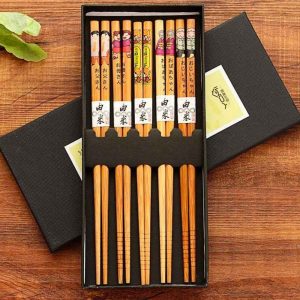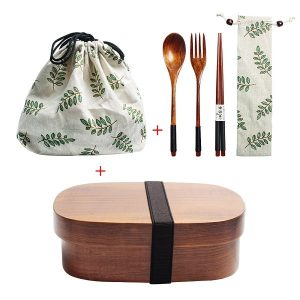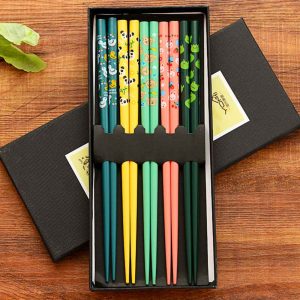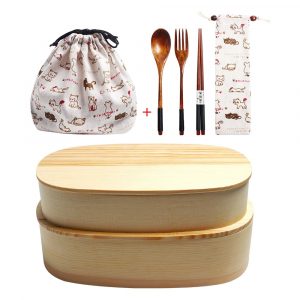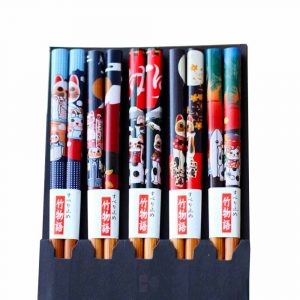Embrace the Nippon Culinary Style with these Handcrafted Japanese Chopsticks
Discover the fascinating history of Japanese chopsticks, also known as “hashi”. These kitchen utensils have origins dating back to the 7th century and have been used in many countries, including China, since the 12th century BC. Over time, Japanese chopsticks have crossed borders to become a staple of Japanese cuisine.
The traditional Japanese patterns, called wagara, are present on these chopsticks. These historic designs have symbolic meanings and are widely used in Japanese culture, whether it’s in decoration, cuisine, clothing, art, or craftsmanship. The wagara patterns on these chopsticks are in shades of blue, a spiritual color in the Land of the Rising Sun.
- The package contains 5 pairs of chopsticks.
- These Japanese chopsticks are made from natural bamboo wood.
- Size: 22.5 cm.
Here are our tips for using Japanese chopsticks correctly:
🥢 If you are not accustomed to holding kitchen chopsticks, here’s a simple method: place the first chopstick in the hollow of your hand at the base of your thumb and hold it still with your ring finger. Then, place the second chopstick between your thumb, index, and middle finger, and move it in a pinch-like motion.
🥢 To use Japanese chopsticks in the proper way, use your left hand, do not stick your chopsticks into food, do not lick them, and place them on a chopstick rest (hashi oki) when not in use.
🥢 Additionally, wooden chopsticks are not for sharing. It is also highly frowned upon to point at someone with chopsticks, just as it is considered impolite to point at someone with your finger in France. Lastly, do not use them to transfer food from one bowl to another: that’s what spoons are for.
🥢 If you wish to discover other patterns for these Japanese utensils, we recommend visiting our collection of Japanese chopsticks. You will be pleasantly surprised by the diversity of ornaments that exist.






